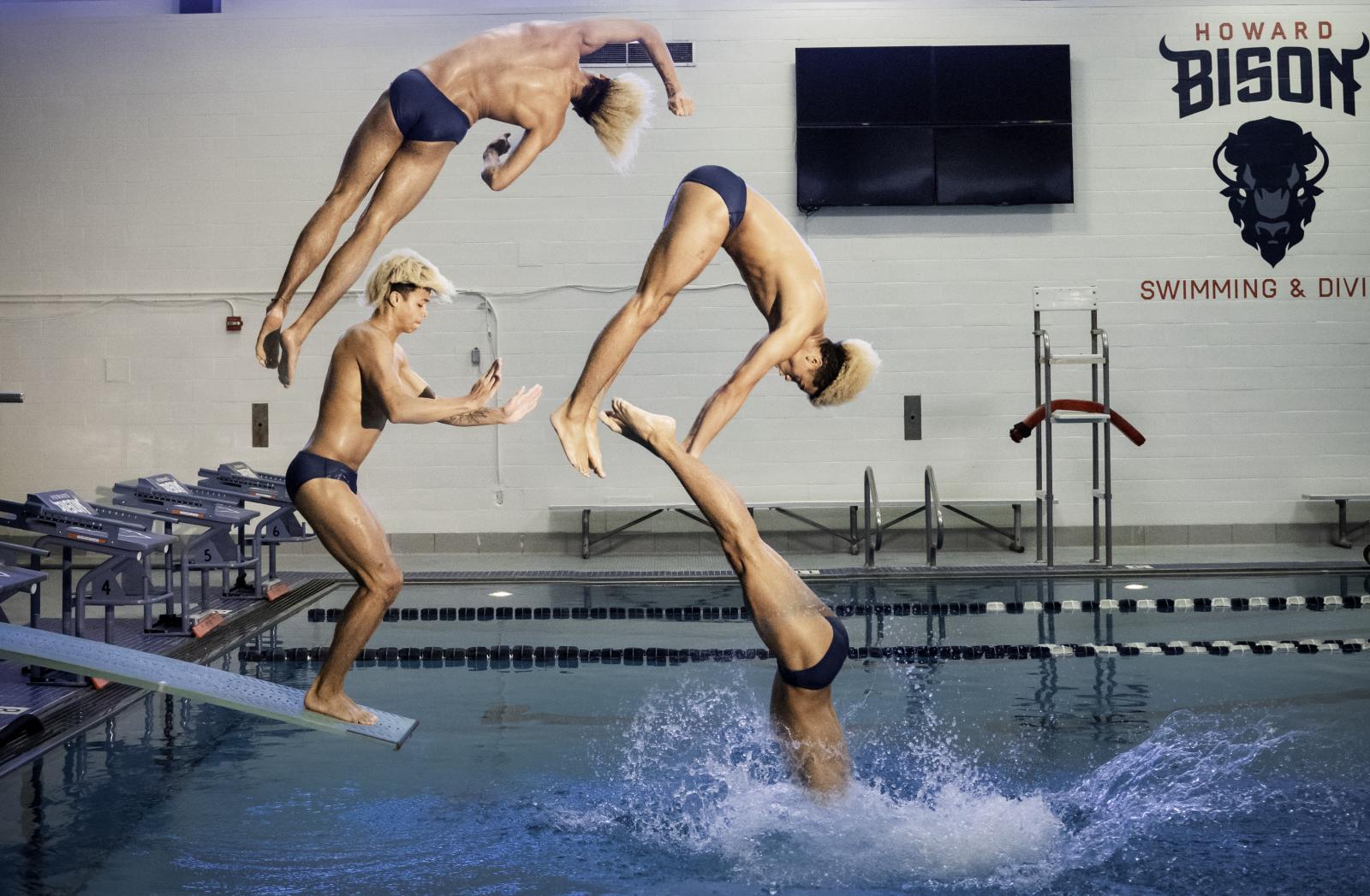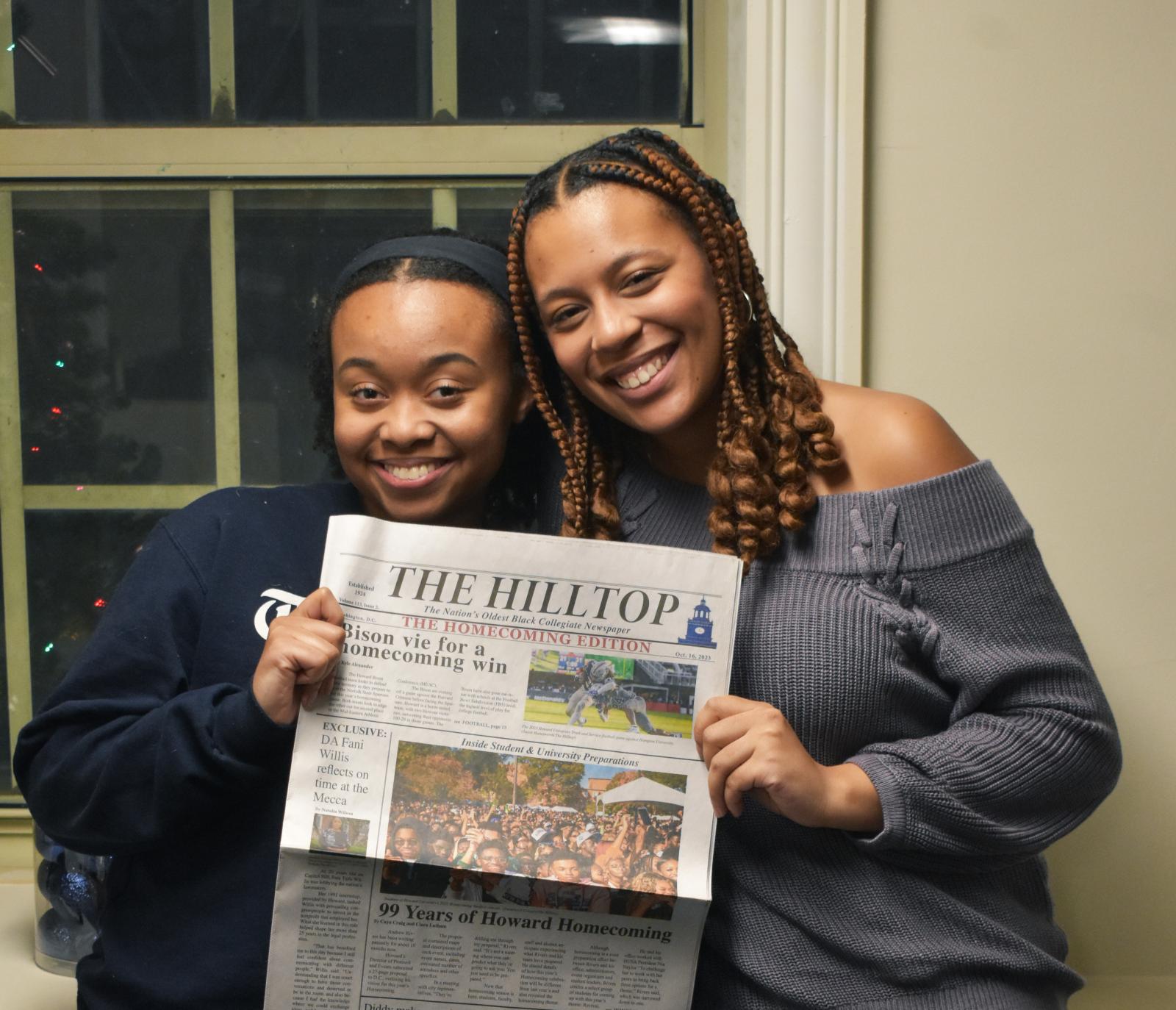Howard historian Rayford W. Logan wrote in “Howard University: The First Hundred Years” that Zora Neale Hurston (BA ’20) and Louis E. King (BS ’24) imagined The Hilltop as a student newspaper with 10, University-centered objectives: Unify the Howard spirit; form and influence student thought; encourage worthy school enterprises; build up respect for constituted authority; foster clean sportsmanship; serve as a medium for the expression of student opinion; acquaint parents with the progress of the school; promote good scholarship and extracurricular activities; encourage young and women to enter the field of journalism; and work constantly for the welfare of the school.
On January 22, 1924, Hurston and King founded The Hilltop, the first Black collegiate newspaper in the nation. One hundred years later, the publication is now its own phenomenon.
For a century, The Hilltop has incubated today’s student reporters and tomorrow’s sought-after journalists—including multiple Pulitzer Prize winners such as Isabel Wilkerson (BA ’83) and Donovan Thomas (BA ’22)—and developed creatives whose storied work has graced major media outlets such as The New York Times, The Atlantic, CNN, ESSENCE, and BET.
As the award-winning publication celebrates its 100th birthday, we spoke with Hilltoppers in all facets of Black media who have, throughout the years, ensured the paper’s continued success.
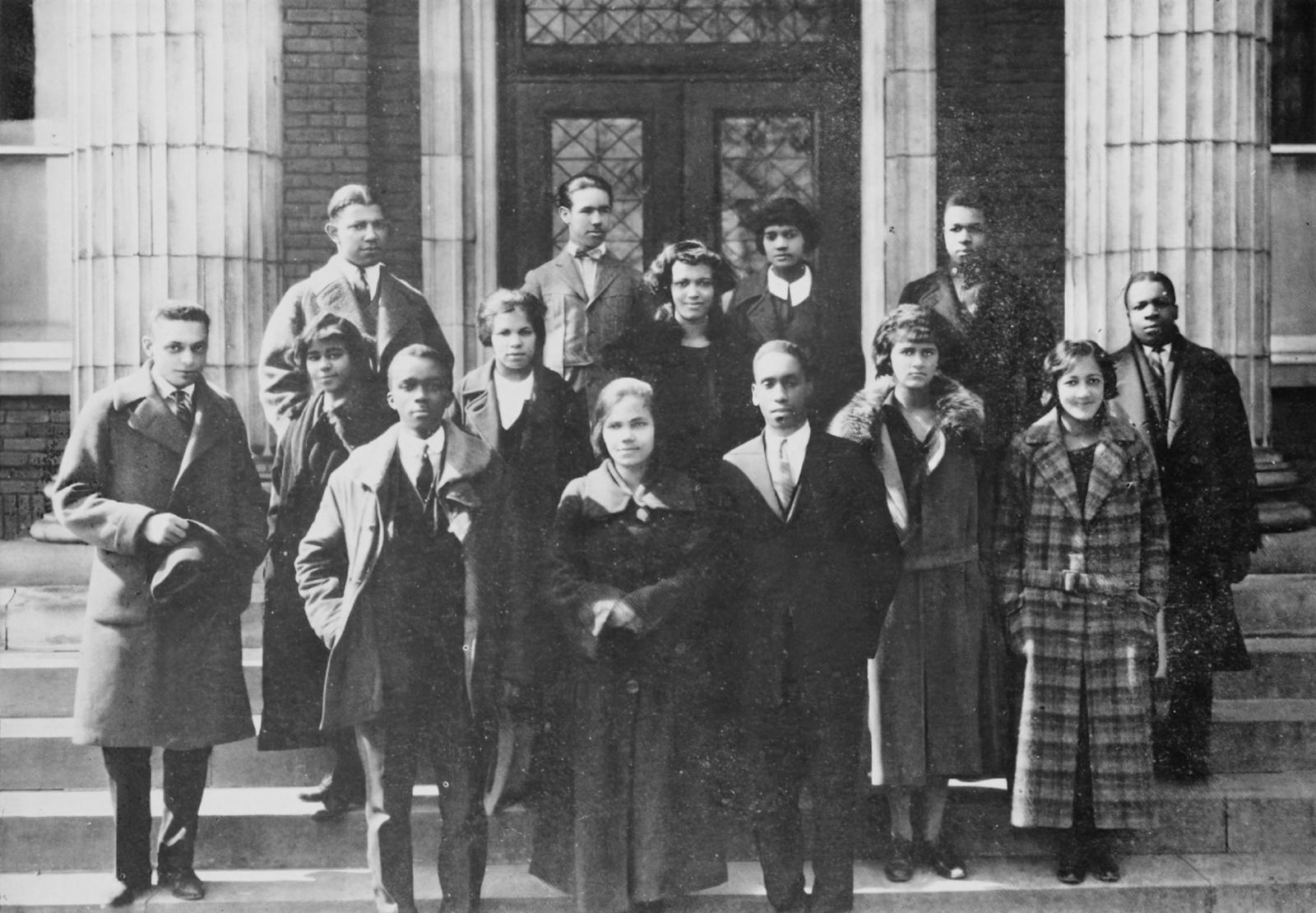
Torchbearers of The Hilltop
Jasper Smith, The Hilltop’s current editor-in- chief, is a self-described poet-turned-journalist in love with the process and connection of storytelling. Smith says that by being a safe space for student voices, The Hilltop serves a distinctive role in Howard’s history.
“The first issue of The Hilltop was an article talking about the challenges of registration, so it’s always been The Hilltop’s [responsibility] to hold systems accountable, hold people accountable, hold students accountable,” she says.
Per archives collected by the Moorland-Spingarn Research Center, The Hilltop was Hurston’s second literary project (1921’s Stylus Magazine was her first). The newspaper’s name is a testament to Hurston’s undying love for her alma mater. She first heard the term after her first Rankin Chapel assembly.
“My soul stood on tiptoe and stretched up to take in all that it meant,” Hurston penned in her autobiography “Dust Tracks on a Road.”
“So I was careful to do my classwork and be worthy to stand there under the shadow of the hovering spirit of Howard.”
King, the co-founder of The Hilltop, was known for his creativity, debate skills, and intellect. At Howard, he was a member of the Student Council, Kappa Sigma Debating Society, and the Student Progressive Club. He also reported and wrote for the new paper.
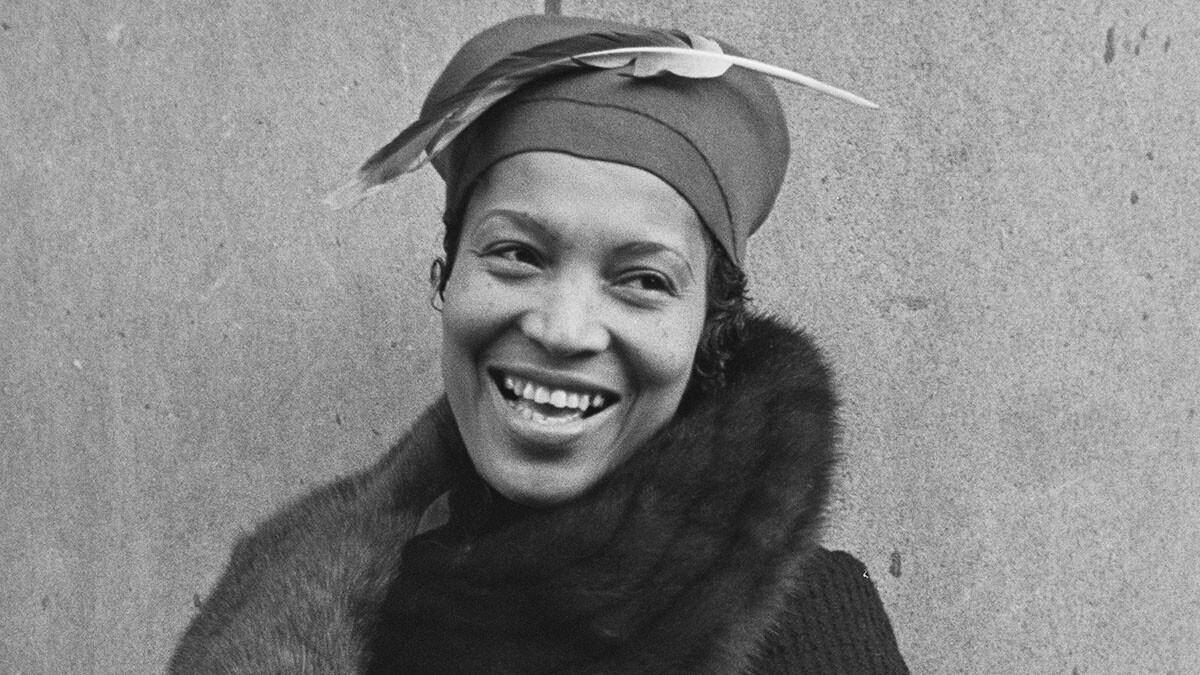
Howard’s Studies at The Hilltop
Historically, The Hilltop has served a myriad
of purposes: it has been a learning lab and student newspaper, a place for community while also an opportunity to begin an individual legacy. This is especially true for The Hilltop, considering its 47-year “head start” on the establishment of a proper communications curriculum inside the University. The Hilltop covered on some of Black America’s most pressing concerns.
“The Negro masses must utilize all the power of the collective strength in non-violent revolt,” wrote second-year student Mike Thelwell in 1961 in his analysis of fellow HBCU students at North Carolina A&T State University, known as the Greensboro Four, during the Civil Rights Movement. In 1969, Tim Graves recapped Shirley Chisolm’s speech to Howard students urging their continued participation in the Civil Rights Movement.
Bill Johnson (BA ’65, MA ’67), The Hilltop’s 1964-1965 editor-in-chief, said that with no proper journalism program, The Hilltop’s weekly coverage also became an inward look at campus life. Johnson said that The Hilltop’s training provided transferrable, journalistic experience that inspired conscious thought.
“What we would do was give voice to certain writers,” Johnson says. “There was probably more concern about who’s going to be president of the liberal arts student council than who’s going to be president of the United States. We were designed to reflect and capture what we perceived to be the major issues on campus.”
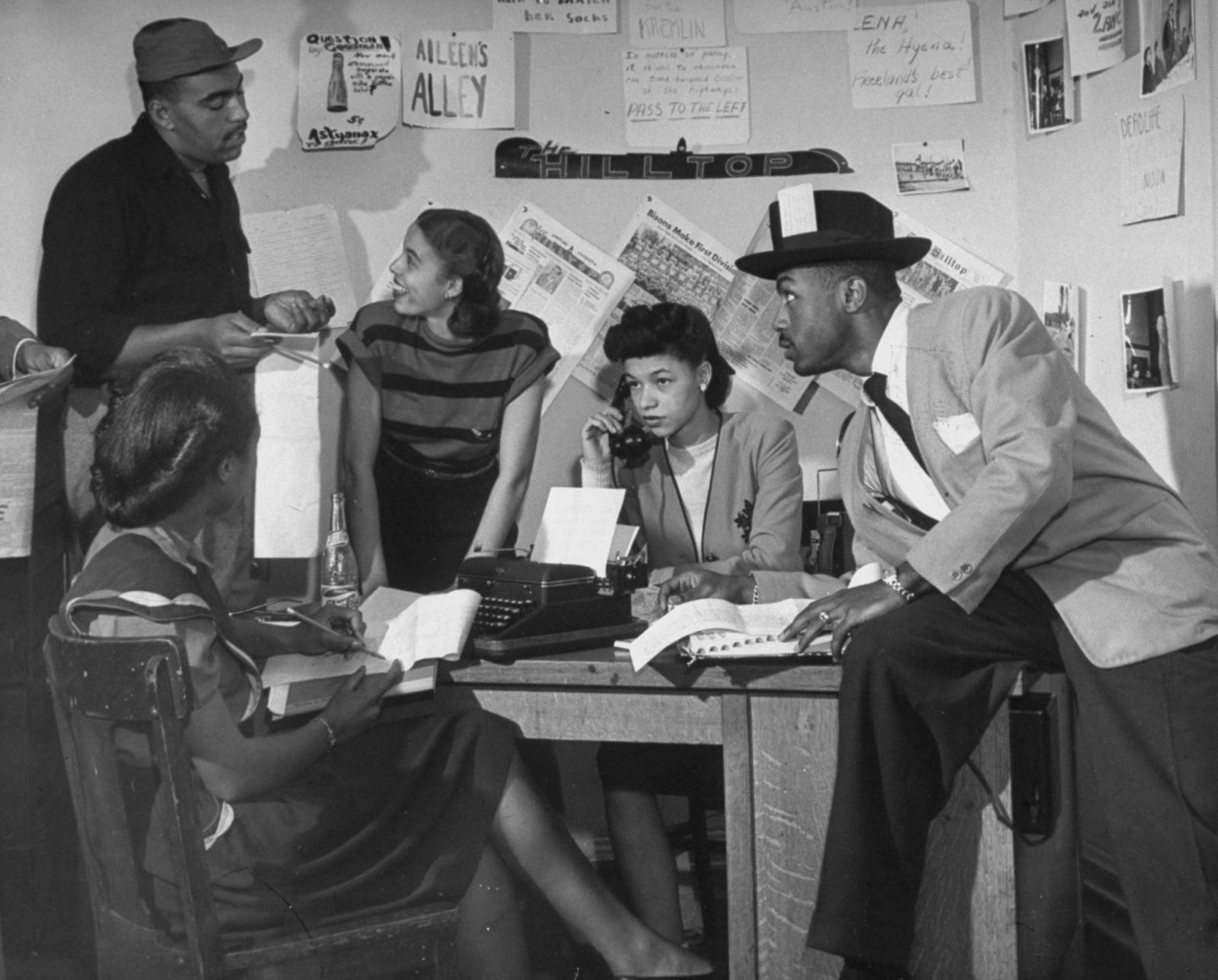
Howard opened the Cathy Hughes School of Communications in the Fall of 1971. “We’re the only undergraduate school that must turn out professionals,” said founding dean Tony Brown in The Hilltop on November 12, 1971. “We’re going to train our students to be intelligent enough to write for Muhammad Speaks or the Washington Post.”
Nine years later, one of the school’s most revered faculty members agreed to serve on The Hilltop’s advisory board: Lawrence Kaggwa, known and respected on Howard’s campus as the “Godfather of Journalism.” He also created the Community News. NewsVision is also a brainchild of Kawwga for journalism broadcast students.
As a member of both the journalism faculty and The Hilltop’s board, he encouraged students to publish in The Hilltop, embedding a certain standard of excellence into the newspaper’s mission.
“If they wanted to pass, they had to really push themselves,” Kaggwa said. “There were very serious students, but when they graduated, that’s when they appreciated it most because they found that no HR or reporter would say ‘You do not qualify.’ That was not an option; you had to be overqualified.”
Hilltop alumna Jennifer Thomas (BA ’88), currently the school of communications’ journalism sequence coordinator, trains every journalism major student before they graduate. “I’ve added lectures such as ‘Reporting While Black,’ and we take a look at what Black journalists go through,” Thomas says.“We also look just at the role of the Black press in terms of being a vanguard in a historical sense. We take this approach so people can turn to our outlets like The Hilltop and read a well-versed, well written story about some of the issues they may not know about.”
Robert Vickers (BA ’90), national and local editor in 1990, recalls growing up in an era when Black journalists were only peppered throughout the media landscape. Negative stereotypes about Black people in media were abundant—and common.
“You become someone committed to the craft, committed to truth, committed to clear and informative writing,” Vickers says.
There was no room for “gotcha journalism” which prompted a “generational atmosphere” as The Hilltop trained what Vickers calls “the first generation of Black journalists.”
“Just being in the environment of information and curiosity and a relentless pursuit of the truth from the Howard perspective is really the greatest educational experience I think I've ever had,” Vickers says.
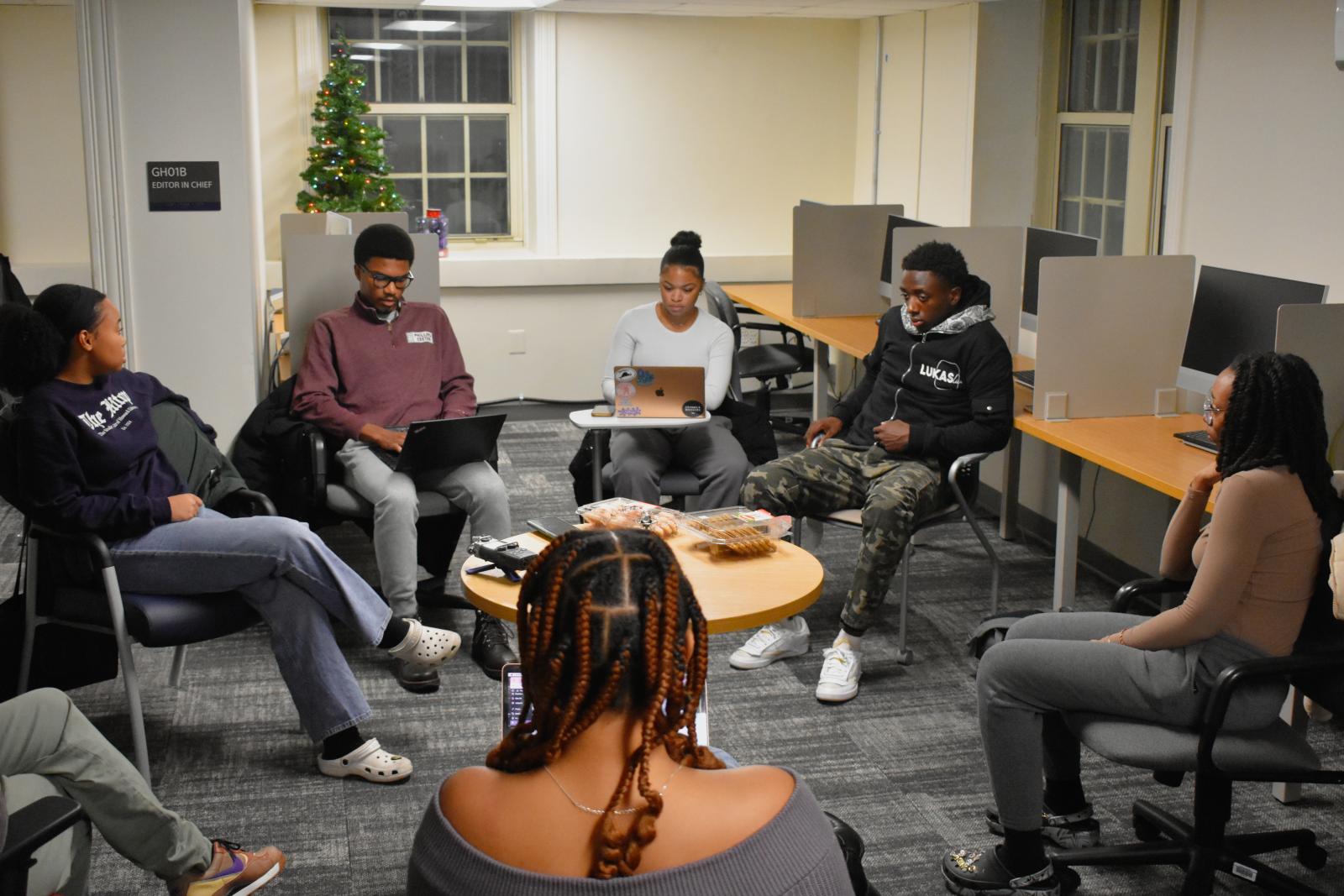
Three-time Pulitzer winner and veteran Washington Post crime reporter Keith L. Alexander (BA ’91) says he looked forward to working in media due to his time as Tempo editor in the ’90s, one of the most admired cultural eras of modern Black history. “Howard at the time was the hub of fashion, intellect and talent,” Alexander recalls. “You combine that with being in Washington, D.C., and it was just the best of all worlds.”
Among The Hilltop’s most memorable stories from that generation was the Yard’s response to the death of the legendary multi-genre dancer Alvin Ailey from an AIDS-related illness at 58 on December 1, 1989. Through the eyes and pen of Tracy E. Hopkins (BA ’92), she collected condolences and praises of Ailey from the Howard Dance Ensemble and dance instructors from the College of Fine Arts such as John Perpener, who studied at the Alvin Ailey Dance Center in New York.
“I will never forget how many students came up to me and said, ‘I didn’t even know he died,’” Alexander says about the article’s reception. “Not the Washington Post, not CNN, or CBS, but The Hilltop [informed people] that he had passed, and that meant so much to me.”
The Network: Honoring What They Gave Us
Countless alumni spoke to The Hilltop’s role in curating Howard’s brand to the world, and the publication has been able to do so at a high level despite economic challenges over the years, what former editor-in-chief Steve Gray (BA ’03) calls “working magic with exceptionally lean resources.”
But eventually, the lack of funding would pose a threat to The Hilltop’s print readership and ability to tell the stories of the Yard. In 2019, Gray, Aprill O. Turner (BA ’00), Otesa Middleton Miles (BA ’94), and other former editor-in-chiefs founded “The Hilltop Fund” in efforts to lift the paper from its financial hardship.
“We launched a campaign in which past Hilltop editors, writers, photographers, and other people within the community wrote to the university’s administration making the case for why The Hilltop must continue to exist—digitally, and in print,” Gray says.
Turner said that during her time as community writer her freshman year, there were moments where upperclassmen pushed her to seriously consider journalism and continue expanding her skillset. That fellowship and shared pursuit of excellence would be lost with The Hilltop. She fondly recalls the camaraderie with folks like Gray, Natalie Hopkinson (BA ’98), and John-John Williams IV (BA ’02).
“They were leaving from Howard and getting great jobs,” Turner says. “It was understood that you were in a place of greatness, that you were getting ready to embark on something.”
Reflecting on the initiative, Gray called The Hilltop “simply irreplaceable,” citing both The Hilltop and Howard University as promoting niche but necessary work in the journalism world.
“The Hilltop is so critical to telling the story of Howard University and its impact on not only our community, but also why the Hilltop is so critical to journalism training in this country, and communications training in this country,” Gray recalls.
But paying it forward means clearing the path. Alexander continues his work at The Hilltop as its technical editorial advisor; he mentioned that his journalism colleagues carry an understanding that, if a hiring manager wants young, quick-on-their-feet journalists, they should inquire about a Hilltop reporter.
“They ask me because they know our students are strong, great journalists,” Alexander explains. “They don’t have to worry about ethics, they don’t have to worry about balance, they don’t worry about the basics of Journalism 101. I stressed to these young people over and over again that I am trying to get you all ready for internships, ready for those first jobs. I’m trying to tell you what is looked for. And it is what is expected of you.”
Miles, 1993-1994’s editor-in-chief, works alongside Alexander. She established a mentorship program where past Hilltoppers are paired with today’s masthead by their specific duties to enhance current staff’s skills and execution. By training journalists at Howard to enter the media landscape, Alexander says The Hilltop’s ability to diversify media is a key piece to its 100-year legacy.
“I believe The Hilltop is responsible for putting more Black journalists in newsrooms around the world than any other college publication,” Alexander says. “After 100 years, you have journalists who have worked at the Wall Street Journal, The New York Times, CNN, CBS Morning, ESPN, the Miami Herald Tribune, I can go on and on. That’s a legacy that very few college publications can say.”
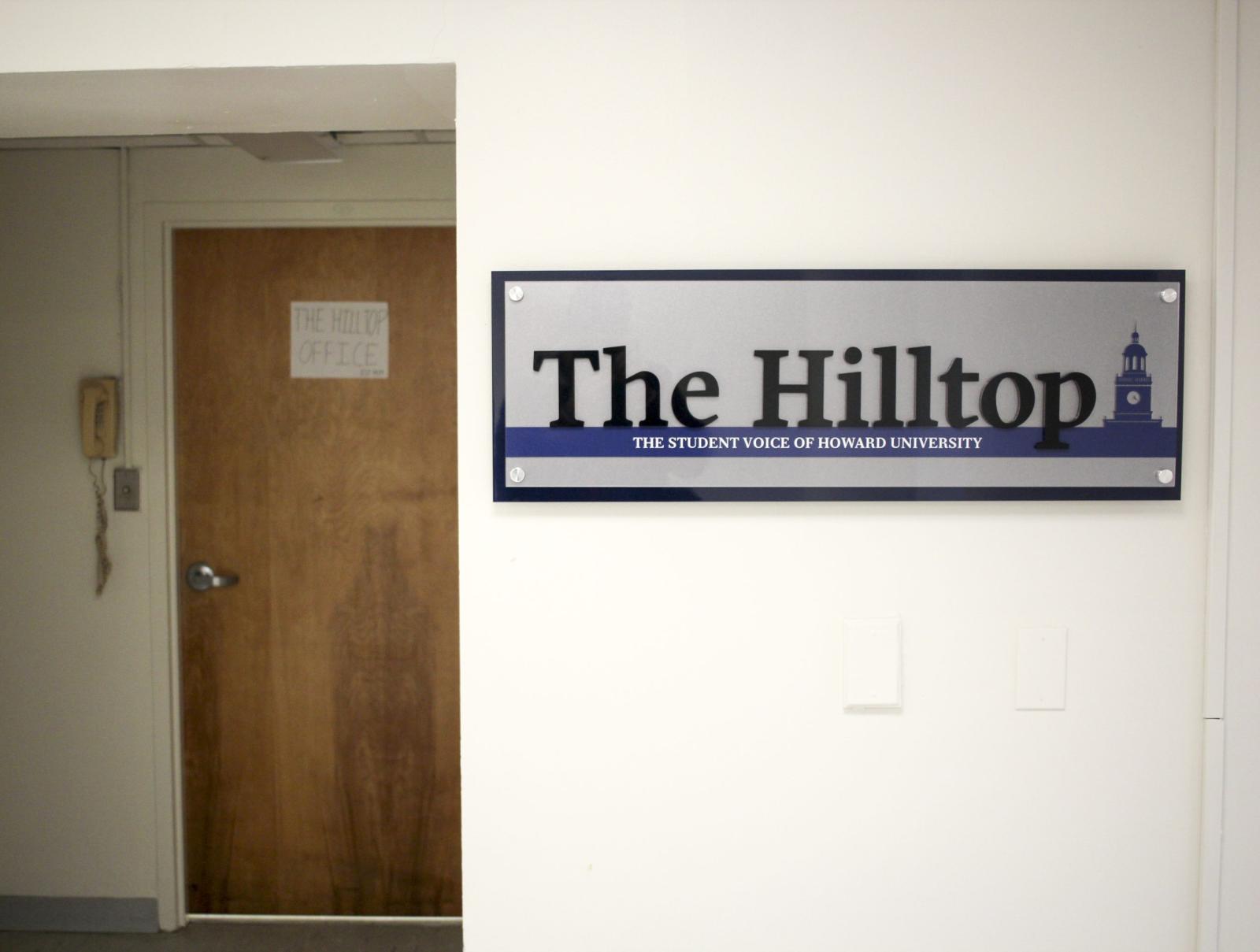
100 Years: For Zora, For Howard, For You
The Hilltop remains the vanguard of Black collegiate journalism. Its award-winning podcast, “The Hilltalks,” where reporters reflect on their stories and recent news, is the publication’s newest storytelling venture targeted toward this generation of Bison. The Hilltop also added an investigative branch that reflects and expands its founding missions of forming student thought.
Senior Makenna Underwood, the inaugural investigative editor, said the desk emphasizes balance and inclusion of both administrative and student perspective. In her role, she says that the new desk indicates a new chapter in Howard’s history, as The Hilltop now has the appropriate resources to “reflect the time,” Underwood says. “It just goes to show that Howard is setting the standard for collegiate journalism.”
The investigative desk has published five stories to date, including an in-depth look into Kelvin Washington, the Showtime band director placed on administrative leave for allegedly abusing and harassing band members; an report tracing $10,000 missing from the purported $21,000 raised by the Live Movement to the Blackburn Student Alliance during the 2021 Blackburn Takeover protest; and an account on staff shortages throughout the University’s mental health service programs.
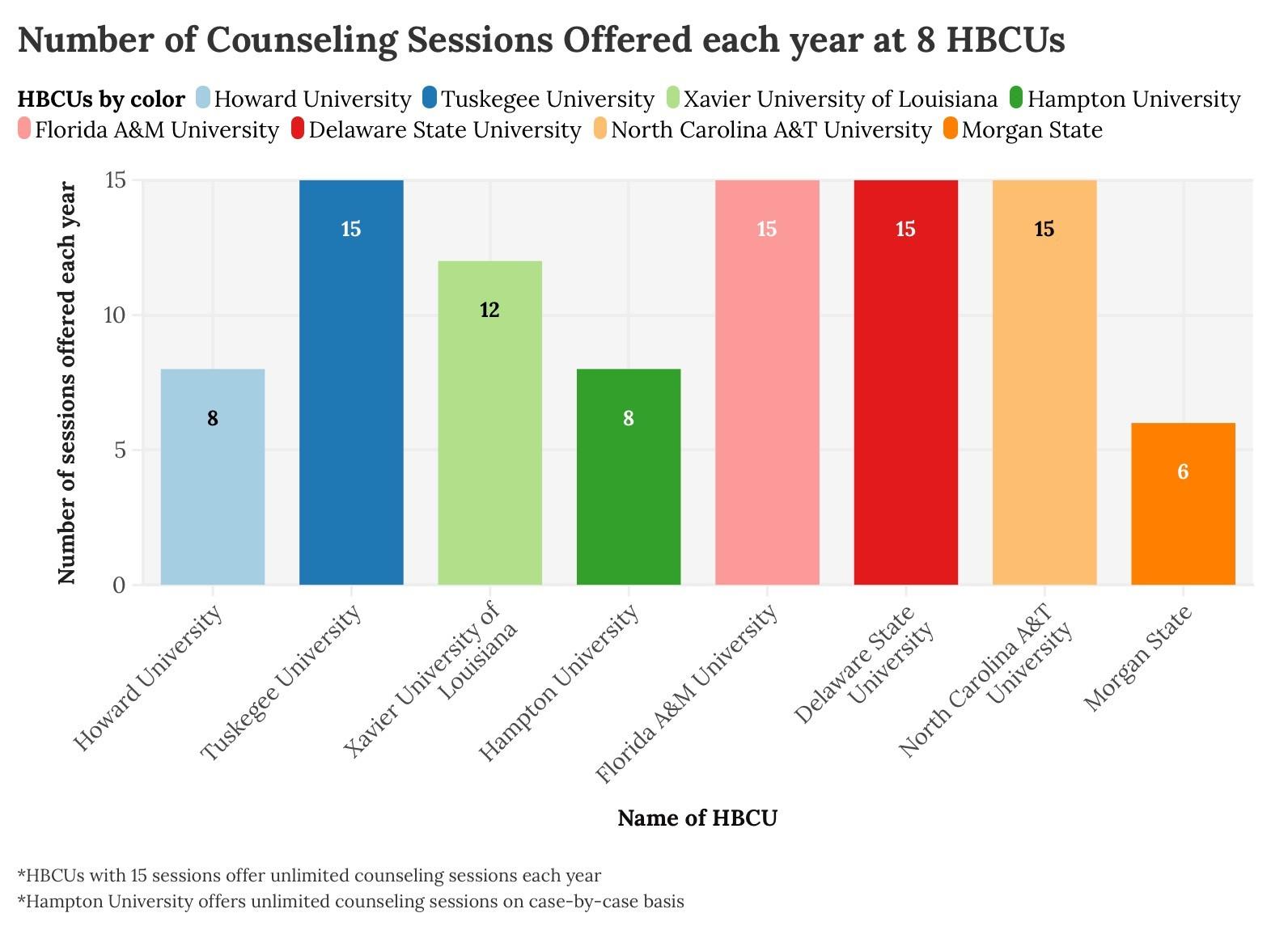
“With there being the pandemic, the protests, the bomb threats, even experiencing things like Kamala Harris (BA ’86) entering office, even getting a new president, I feel like it’s a turning point in the University to cover these events as they are happening,” Underwood says.
Smith says that The Hilltop’s growth will require finding new ways to share stories, but she finds resolve in the foresight of its founders.
“Knowing that Zora Neale Hurston’s vision was just that: being able to provide perspective and insight of Howard University students, faculty and community members, seeking truth and reporting it, being objective, being accurate, those core values, and that being our mission, that’s extremely stabilizing,” Smith says.
A centennial celebration organized by The Hilltop’s staff and alumni network is scheduled for February 3, while an audio documentary on the milestone is being produced by Chris Evans, PhD, an assistant professor in the school of communications.
“I’m excited to tell the stories of these hard-working journalists at such a momentous time in the history of The Hilltop,” Evans wrote in a statement. “They do so much through their work—informing their audiences, for sure, but also helping to create the sense of community that makes Howard special.”
Smith and N’dia Webb, The Hilltop’s current managing editor, are narrating their experiences for it.
“I think part of understanding the importance of the 100 milestone is also equally pouring into the future of The Hilltop, being intentional about training reporters and editors that aren’t seniors so the skills that I’ve learned over the past two years [are passed on] and making sure that they have the resources to advocate for themselves after me,” Smith says.
There is a consensus to honor the house that Zora built, praising those who have tidied it along the way, and led bright, Black scholars into their professional media careers. And it is just as clear that The Hilltop’s success is showing no signs of slowing down.
“I hope it reaches another 100 years, even 1,000 years,” Kaggwa said. “The Hilltop has to be there at Howard.”
(Research assistance courtesy of Howard University Archives.)
Article ID: 1981
Keep Reading
-
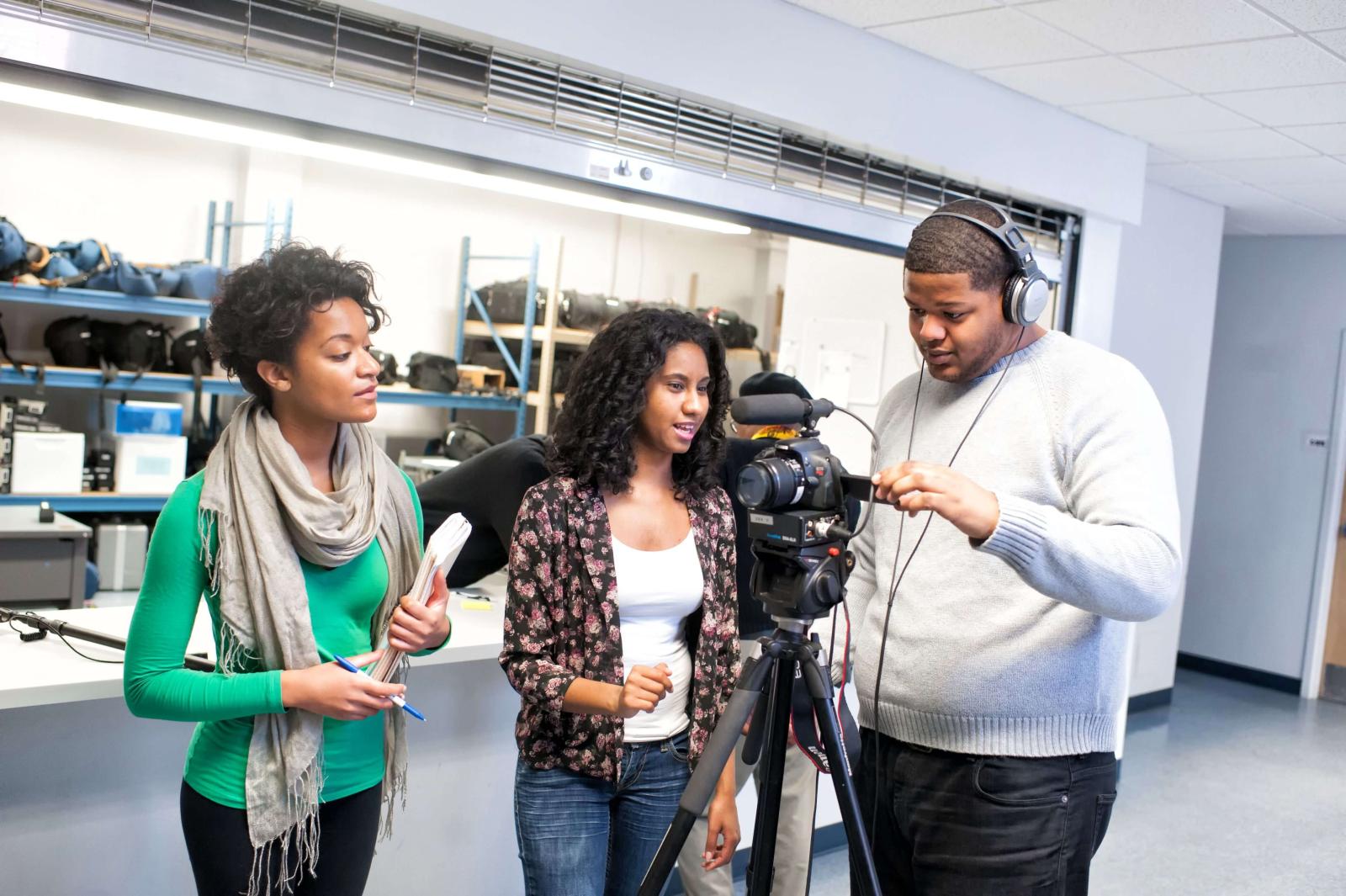
CHSOC at 50: A New Direction, A Return to Our Roots
The School of Communications celebrates 50 years of educating and training students in the media and beyond.



